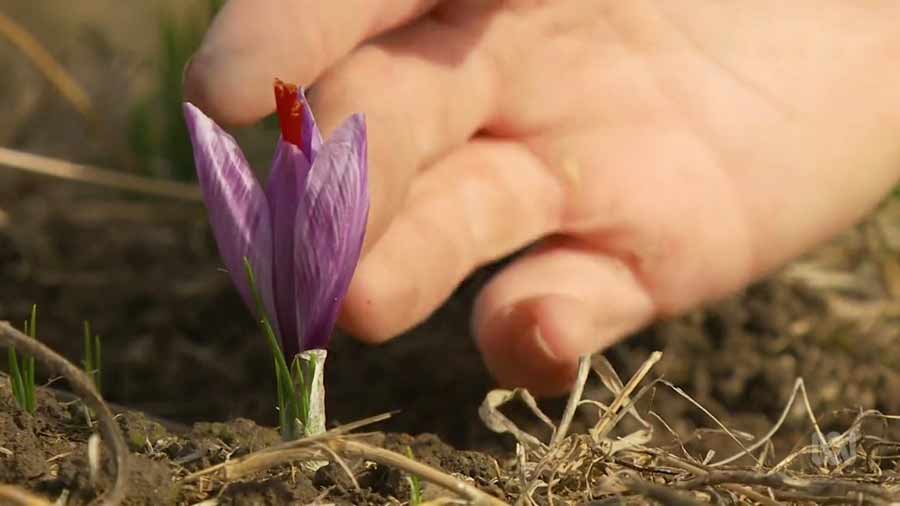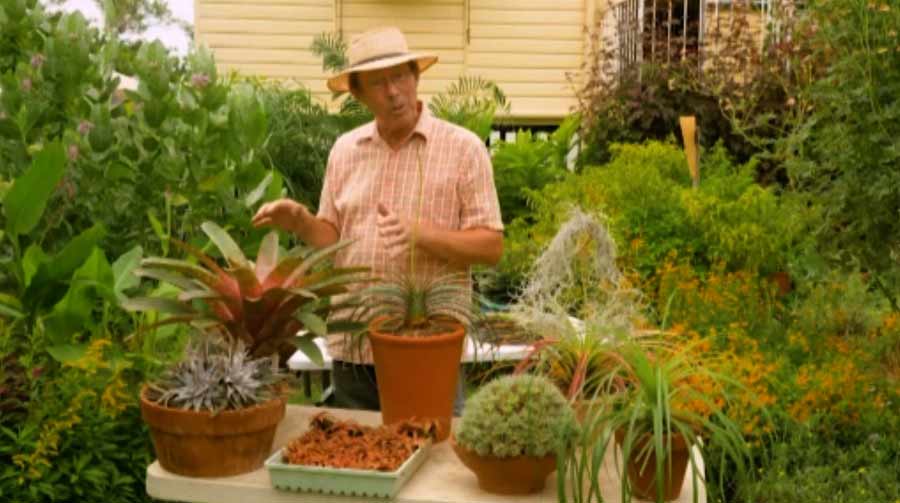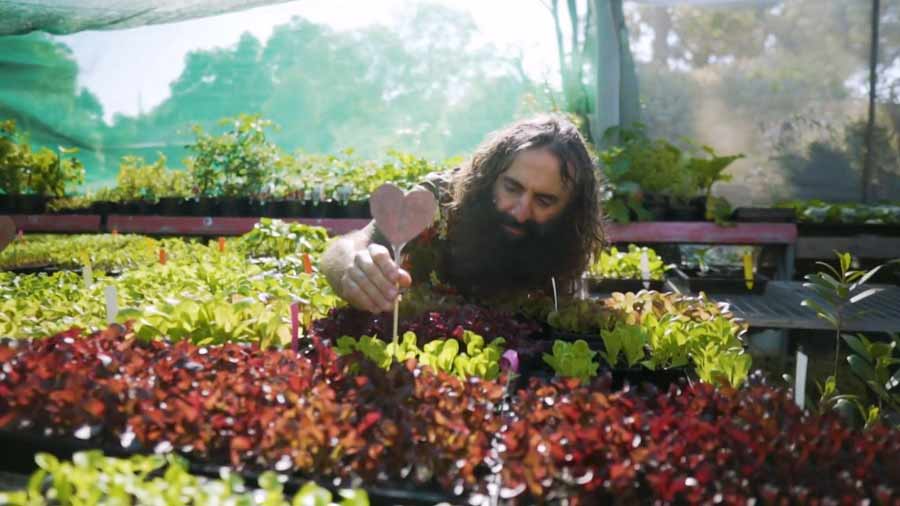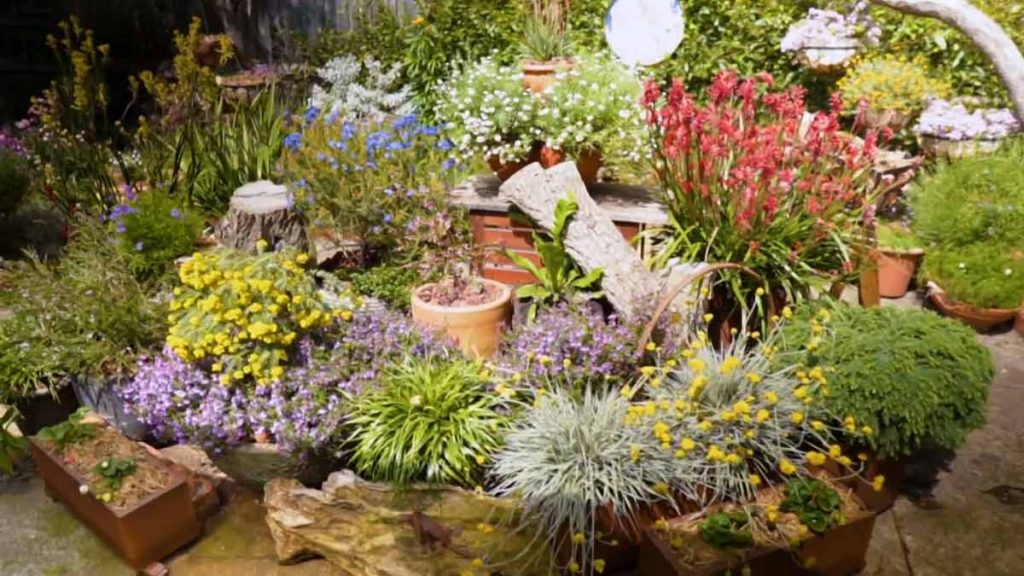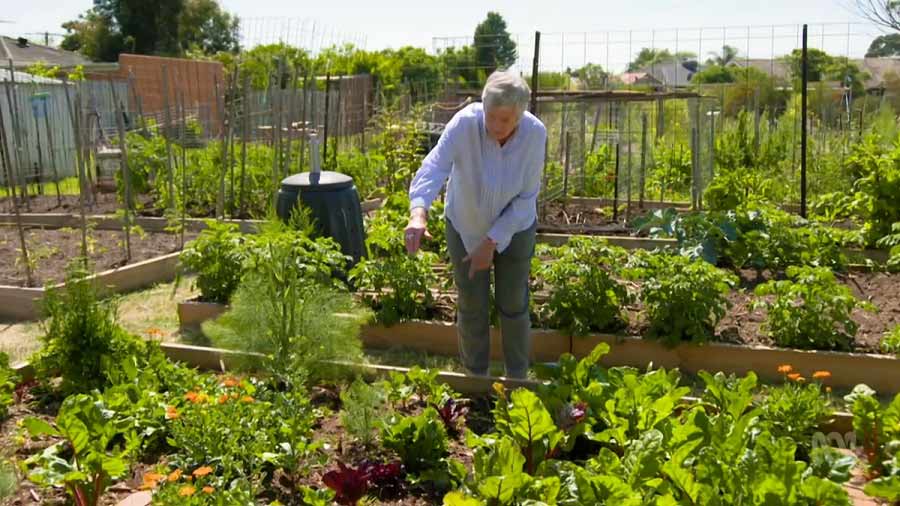Gardening Australia episode 9 2020: Costa Georgiadis discovers new life in a fire affected landscape, Jane Edmanson visits a garden celebrating perennial plants, Millie Ross plants flavour packed produce and Tino Carnevale explores a saffron farm.
Gardening Australia has always provided practical, trustworthy and credible gardening advice to inspire and entertain. Inspiring, entertaining and full of practical advice, join Costa Georgiadis and the team as they unearth gardening ideas, meet avid gardeners and look at some of the most inspiring gardens from across the country.
Gardening Australia episode 9 2020
After the Fire
Costa visits the Blue Mountains World Heritage area to discover how the landscape has been affected from a devasting summer of bush fires. Costa pays a visit to the Blue Mountains Botanic Gardens at Mount Tomah, within the Blue Mountains World Heritage area, to investigate how the landscape has begun to regenerate after the bushfires of late 2019.
Incredible efforts by the team at the botanic gardens and fire fighters saw much of the collection at the gardens saved from the Gospers Mountain mega-fire in December 2019, the surrounding conservation area, also managed by the gardens, was not so lucky. Around 90% of this 180-hectare space was heavily impacted, the landscape burnt and blackened as far as the eye can see. But closer inspection reveals smatterings of green, signs that the bush is slowly recovering.
Dr Brett Summerell, Chief Botanist from the Royal Botanic Garden Sydney, explains that Australian native plants respond differently to fire. “These old Eucalypts are punching out epicormic growth, clusters of new shoots coming out of the trunks, and they are able to do that because the trunks have been somewhat protected and insulated by thick layers of bark” he said. Epicormic growth appears from a previously dormant bud on the trunk or a limb of a tree, and is able to penetrate the external bark layer to continue to grow.
The Art of Perennials
Jane explores the garden of a passionate perennial plant collector and nurseryman.
FAQs – Rainforest plants | Flowering tulips | Plant spacing
Gardening Australia presenters answer commonly asked gardening questions.
Clean Living
Jerry shares simple garden hygiene tips, to keep your plants pathogen free. At Jerry’s place, cleanliness is next to ‘gardenliness’, with good horticultural hygiene keeping his soil, and plants, healthy, happy and productive. Prevention is ALWAYS better than a cure when it comes to plant pathogens and soil health, and Jerry shares his simple and effective tips for running a tight, hygienic ship!
Worth the Weight
Tino visits a Tasmanian saffron farm to learn how the world’s most expensive spice is grown. Saffron Crocus (Crocus sativus) are a small, somewhat unassuming flower with purple petals. But it is what’s inside that counts – the red, three-pronged stigma. When plucked and dried, this becomes what we know as saffron, the spice that is worth more than gold.
30 years ago, Nicola Noonan and her husband left their corporate jobs in Sydney, purchased a farm and began importing Saffron bulbs. While this farm produces over 100,000 saffron crocus flowers per year, that doesn’t equate to a lot of saffron strands – one kilo of dried saffron comes from 250,000 flowers!
Nicolas son Patrick is now very much involved in the farming of these fragile, finicky corms. To harvest, Patrick explains that it is a matter of selecting open, upright flowers, and gently pinching of the flower, without damaging foliage or pulling the plant from the ground. Harvesting is done by hand, which ensures accuracy, and a higher probability of the crocus repeat flowering in the season. Harvesting occurs in the morning, as early as possible – this ensures the flower is sitting upright, and the stigma has not been exposed to too much sun.
Taste Sensations
Millie gets a head start on her winter crops by planting out a full range of flavours; bitter, sweet, sour, salt and savoury.
A cold climate classic, Radicchio (Cichorium intybus cv.) imparts those bitter flavour notes that are often underappreciated in Australia, but very much celebrated in European countries. These leafy legends do best in locations with cold winters – it improves their flavour – so Millie should have no issues in her central Victorian garden. Millie grows six different Italian varieties from seed, raised in seed trays and planted out when sitting at 10cm or so. They key to success is planting these into rich, free-draining soil, and allowing the plants space to grow – around 30cm – 40cm between seedlings.
Plant Profile: Magnificent Mint Bush
We profile Prostanthera magnifica the Magnificent Mint Bush – a striking upright shrub with mint-scented foliage.
A House in the Sticks
Emmaline explores the diverse world of insects to discover what we can do to nurture these crucial backyard pollinators. When most gardeners hear the word “insects”, their thoughts turn immediately to either the European Honey Bee, or persistent ‘pests’ like aphids and fruit flies whose presence in our patches are rarely welcomed. But Emmaline wants us to think outside the ‘hive’ and take a look at some of the other mini-beasts that make our backyards so biodiverse, the awesome insects that share our urban spaces.
“90 percent of all living species are invertebrates, those animals that lack a backbone” says Karen Retra, naturalist, gardener and insect enthusiast. “This includes animals as diverse earthworms, sponges, crustaceans, molluscs, spiders and, of course, insects. Australia is home to about 500,000 animal species, half of these are insects and only about a quarter of them have been named, so if you want to discover a new species, there’s an estimated 100,000 out there to discover” laughs Karen. Has she discovered a new species? “Yes, I think I have actually, a type of Braconid Wasp – it’s bright pink and has a HUGE ovipositor (the egg-laying tube), I’ve got pics of it, but I need an actual wasp to get my discovery confirmed!”.
Jarrah and Marri
Josh compares two iconic Western Australian trees.
Subtropical Surprise
Sophie visits a garden in the suburbs of Adelaide dedicated to overcoming the challenges of growing subtropical fruits in a Mediterranean climate.
Extensive collection of fruit and nut trees, berry bushes and some vegetables. To the north the garden is planted mainly with subtropical fruit and citrus trees, many of them unusual and difficult to grow in SA climatic conditions. 70 different species present, including 6 varieties of bananas, avocados, guavas, chinotta, coffee, red and white dragon fruits, black and white sapotes, jackfruits, custard apples, a soursop tree and 20 different citrus including rarely grown pomelos. A very interesting garden showcasing the vast variety of fruit that with a little pampering can be grown in Adelaide’s climate.
